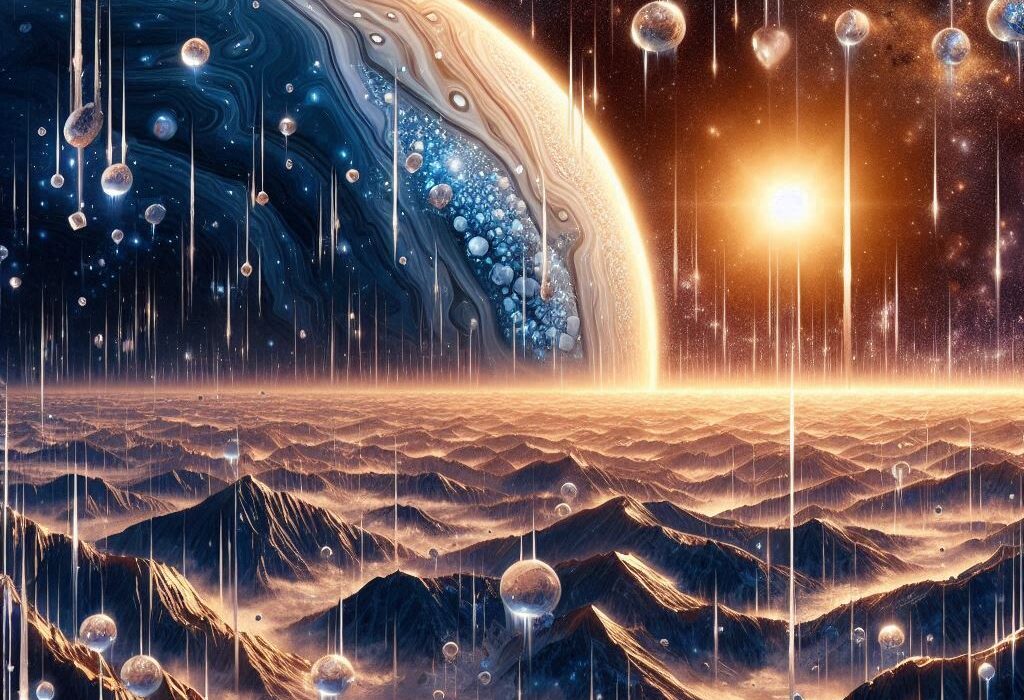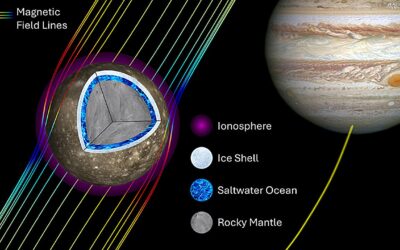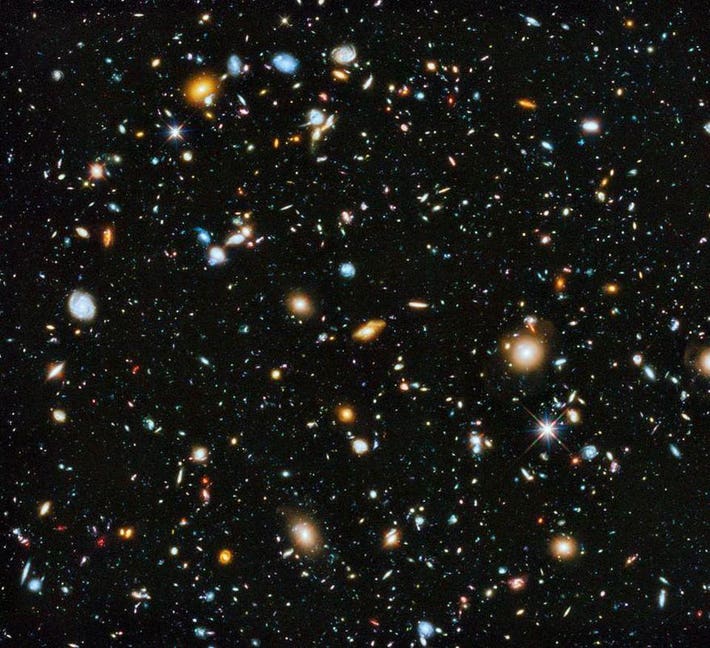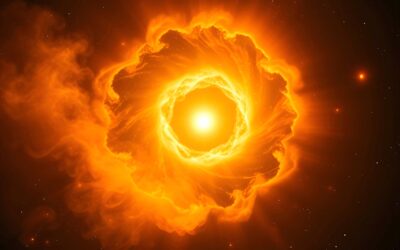When we think of Neptune, our imaginations often conjure an image of a cold, distant world on the outskirts of our solar system. It’s a place of swirling blue clouds and violent winds, where temperatures plunge to near freezing and the pressure far exceeds anything we experience on Earth. However, there’s something extraordinary happening within the depths of this mysterious planet—diamond rain. It sounds like the stuff of science fiction, but recent research suggests that this phenomenon might be a reality. But why does Neptune rain diamonds? What are the conditions that make this strange event possible?
Understanding Neptune’s Atmosphere
To truly understand why diamond rain could occur on Neptune, it’s essential to first comprehend the characteristics of the planet itself. Neptune is a gas giant—but more specifically, it’s an ice giant. This classification arises from the planet’s composition, which is dominated by volatile substances such as water, methane, and ammonia. These elements, combined with hydrogen and helium, create an atmosphere that is vastly different from the one we experience here on Earth.
The Chemical Makeup of Neptune’s Atmosphere
Neptune’s atmosphere is primarily composed of hydrogen and helium, but methane is also present in significant quantities. This methane is crucial to the story of diamond rain because it is the presence of this compound in Neptune’s atmosphere that enables the possibility of diamond formation. Methane absorbs sunlight, which gives Neptune its iconic blue color, but it also plays a key role in the chemical processes that happen deep within the planet.
Neptune’s atmosphere, while cold by human standards, contains highly energetic environments beneath its cloud tops. As we venture deeper into Neptune’s interior, we find that the planet’s temperature and pressure increase dramatically, setting the stage for some very unusual chemical interactions.
Extreme Pressure and Temperature
Neptune, despite being far from the Sun, has a surprisingly hot interior. The planet’s core temperature can reach over 7,000°C (12,632°F), which is hotter than the surface of the Sun. These extreme conditions are essential for creating the necessary environment for diamond formation. The pressure inside Neptune is also extraordinary, far beyond the pressures we can replicate here on Earth. As we go deeper into the planet, the weight of the atmospheric layers above creates immense pressure that is key to the process of diamond creation.
How Diamonds Form
Diamonds are carbon-based crystals, and the process of creating them requires both high pressure and temperature. Under these extreme conditions, carbon atoms bond together in a very specific and highly stable crystalline structure. This is what gives diamonds their strength and their characteristic clarity and brilliance. On Earth, diamonds are typically formed in the mantle, where extreme pressure and heat cause carbon to crystallize over millions of years.
In the case of Neptune, however, the process is not limited to the slow geological processes of Earth. Instead, it’s a more immediate and volatile process that occurs in the planet’s interior. But what exactly triggers the formation of diamonds on Neptune? This is where the peculiarities of the planet’s chemistry come into play.
The Role of Methane in Diamond Formation
The key to understanding why Neptune rains diamonds lies in methane, which is abundant in the planet’s atmosphere. When methane gas is subjected to the extreme pressure and heat deep inside Neptune, the bonds between carbon and hydrogen atoms in the methane molecules can break. This allows the carbon atoms to rearrange into the crystalline structure of a diamond. The high temperatures and pressures inside Neptune facilitate this transformation, turning carbon atoms into diamond crystals.
The Process of Diamond Rain
Once diamonds form in Neptune’s interior, they don’t just remain in the core. Due to the extreme pressure and temperature gradients, these diamonds may be transported upward through the planet’s layers, falling like raindrops toward the lower atmosphere. The intense pressure near Neptune’s core forces the carbon atoms to come together and form diamonds, which are believed to be quite small but incredibly dense. As these diamonds fall through the different atmospheric layers, they might break apart or form larger chunks.
This phenomenon of diamond rain is thought to occur in Neptune’s lower atmosphere, where the pressure is sufficient to allow diamonds to form but not so intense that they are immediately crushed. The diamonds that rain down through the atmosphere may even contribute to a diamond-rich layer that exists beneath the planet’s cloud tops, further solidifying the idea that this strange process is indeed taking place on Neptune.
Is Neptune’s Diamond Rain Really Possible?
While the idea of diamonds raining down from the sky is fascinating, scientists have long suspected that it could be a real phenomenon on Neptune, and more recently, evidence has emerged to support this theory. The possibility was first raised in the early 1980s, when researchers began to understand the role of pressure and temperature in planetary interiors. Subsequent laboratory experiments, which simulated the conditions of Neptune’s atmosphere, further supported the idea that diamond formation could occur under the extreme conditions found on ice giants like Neptune.
In 2019, a groundbreaking study by scientists at Harvard University found evidence that methane could indeed break apart into carbon atoms under pressures similar to those found on Neptune. These carbon atoms could then crystallize into diamond structures under the immense pressure present deep within the planet. The study also found that diamonds might be small and scattered in Neptune’s atmosphere, rather than being large, pristine gemstones. Nevertheless, the results were enough to confirm that diamond rain could occur under the right conditions.
Neptune’s Diamond Rain Compared to Earth’s Diamonds
While Neptune’s diamonds are created through a vastly different process than those on Earth, there are intriguing similarities between the two. On Earth, diamonds are typically formed over millions of years, deep within the planet’s mantle, where heat and pressure cause carbon to crystallize. On Neptune, however, the diamonds are formed rapidly and may rain down to the planet’s lower atmosphere. The conditions on Neptune are far more extreme than anything on Earth, but the fundamental chemical process of carbon bonding into diamonds is the same.
The diamonds found on Neptune are thought to be much smaller than the gemstones we find on Earth. However, despite their small size, the sheer volume of diamonds raining down on the planet makes the phenomenon fascinating. It’s not just a few diamonds here and there—entire layers of diamond-rich rain may be falling through Neptune’s atmosphere, potentially creating vast deposits of diamonds deep within the planet’s interior.
Uranus: A Sister Planet with Similar Diamond Rain
Neptune isn’t the only planet in our solar system that experiences this strange phenomenon. Its twin, Uranus, is also thought to have the conditions necessary for diamond rain. The two planets share similar atmospheric compositions and internal structures, and both experience extreme pressures and temperatures deep within their interiors. As such, scientists believe that diamond rain could occur on Uranus in much the same way it does on Neptune.
While we’ve had limited opportunities to study Uranus up close, scientists suspect that the process of diamond formation on the two planets may be very similar. Some theories even suggest that diamond oceans might exist in the depths of both Neptune and Uranus, where diamonds could be constantly forming and sinking to the planet’s core.
The Fascination with Diamond Rain
The idea that diamonds could literally rain down from the skies of Neptune is an example of how science fiction sometimes aligns with reality. Diamonds, which are typically associated with luxury and rarity here on Earth, are a natural part of the chemical processes occurring deep within Neptune’s atmosphere. This creates a paradox: while diamonds are precious and rare on Earth, in the context of Neptune, they are almost commonplace, falling endlessly through the planet’s atmosphere.
For scientists, this discovery opens up exciting new possibilities for understanding planetary chemistry and the role of extreme environments in shaping the materials that make up our universe. Furthermore, it provides insight into how planets like Neptune and Uranus might have formed and how their internal compositions have evolved over time.
Conclusion
The phenomenon of diamond rain on Neptune is one of the most mind-boggling aspects of the planet’s extreme environment. From the methane-rich atmosphere to the crushing pressures and searing temperatures within the planet’s depths, everything about Neptune’s conditions seems to be tailor-made for the formation of diamonds. While we may never visit Neptune in person, the science behind this incredible process reveals a fascinating side of the planet that we can study and marvel at from afar. The possibility of diamond rain challenges our conventional notions of value and rarity and brings us one step closer to understanding the intricate forces that shape the distant worlds of our solar system.






